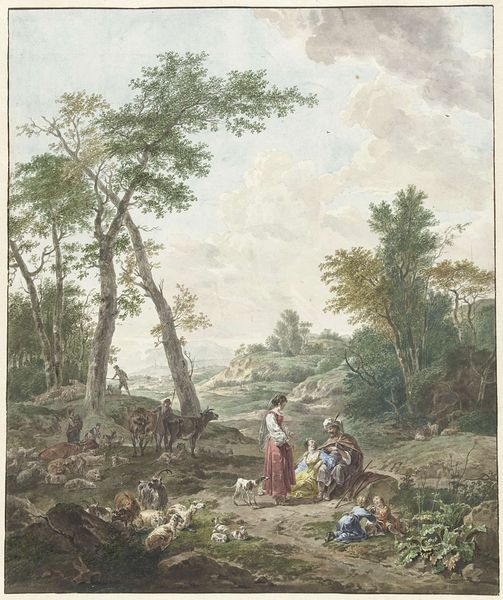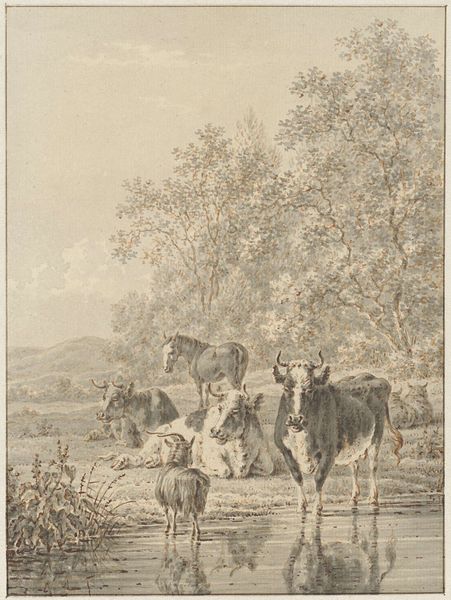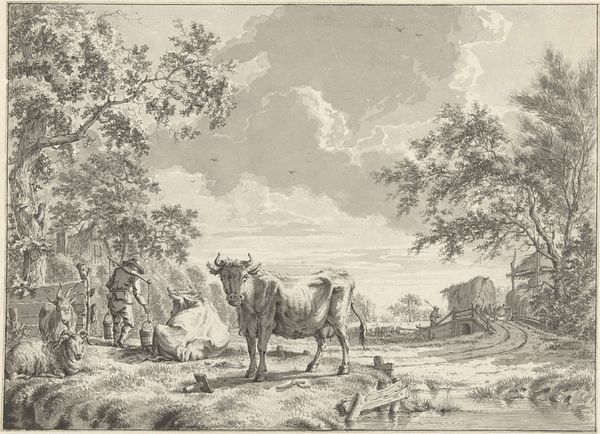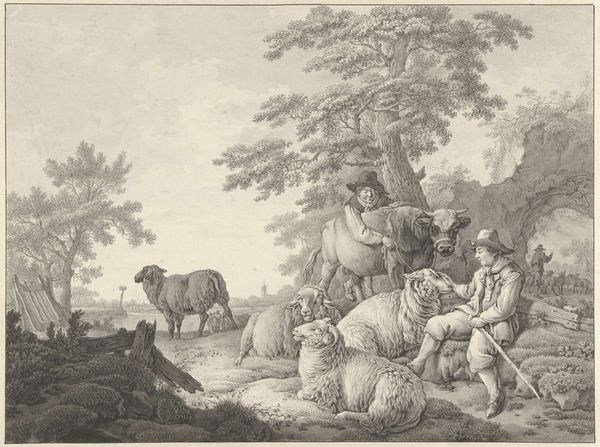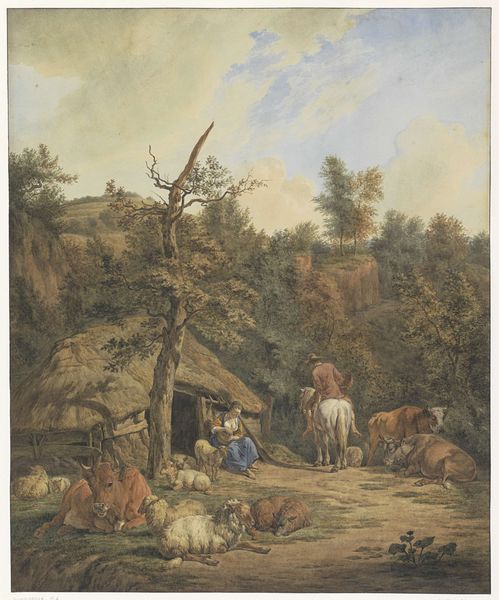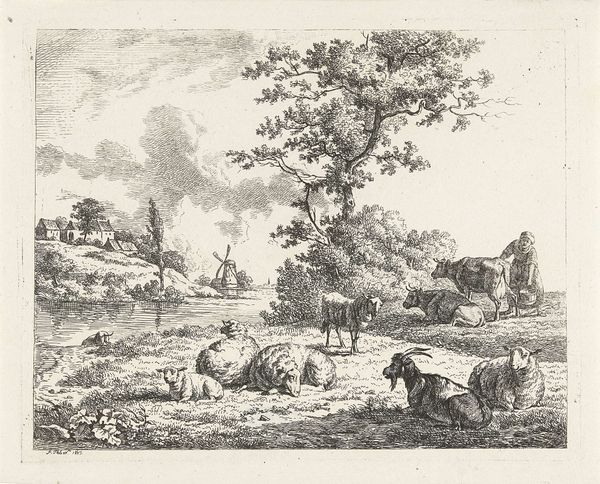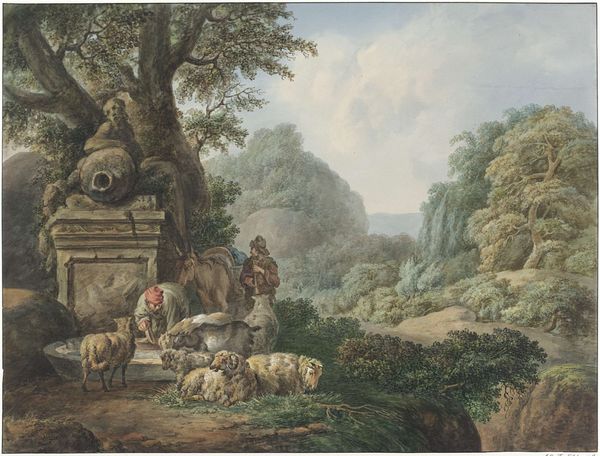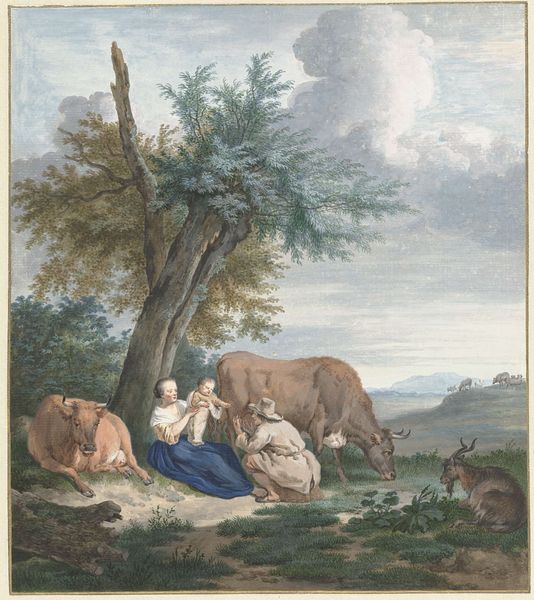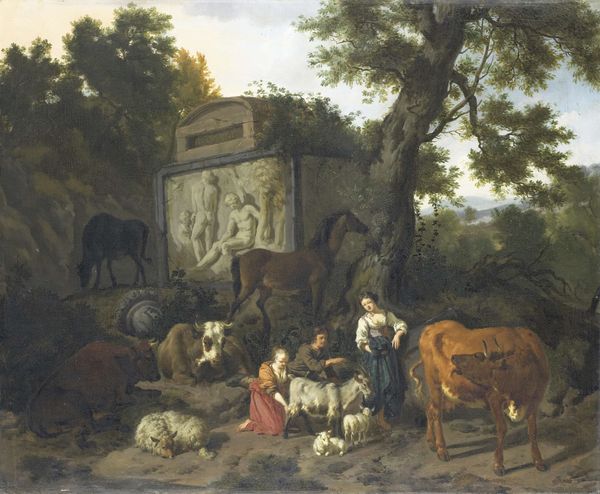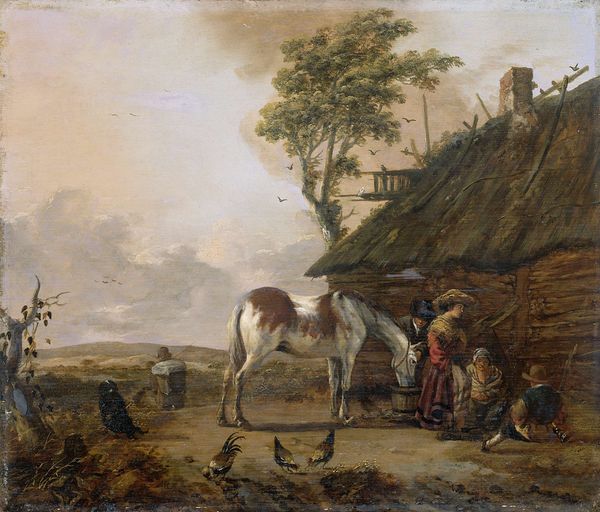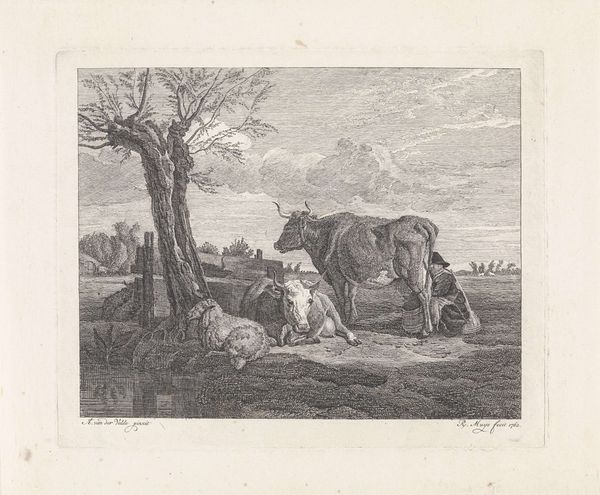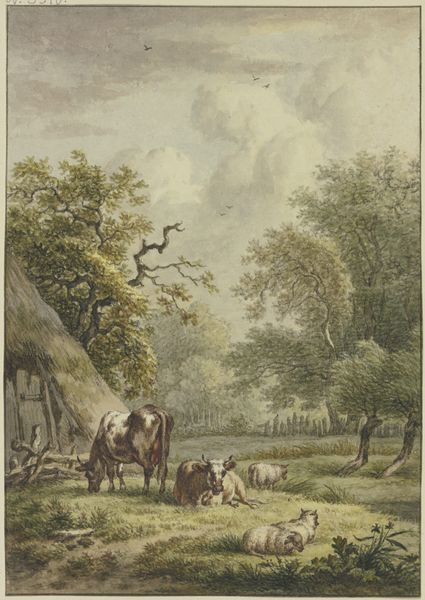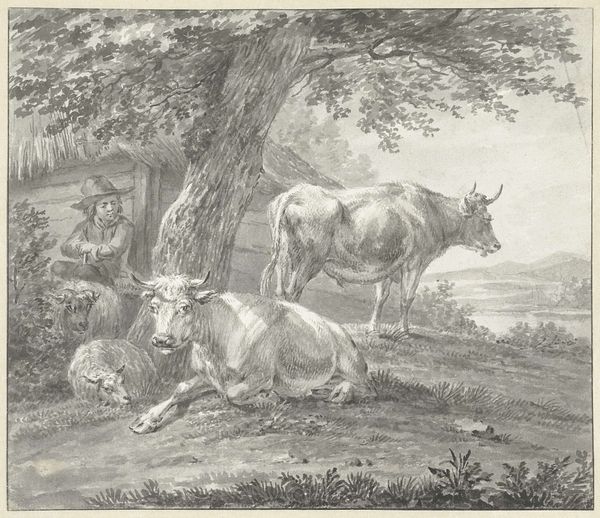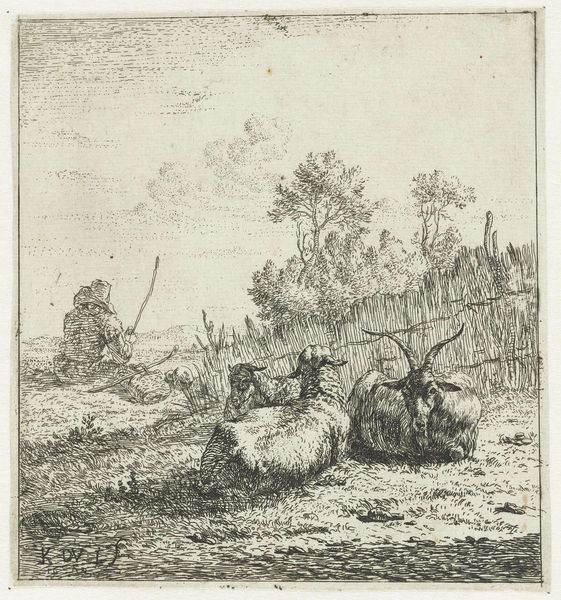
painting, plein-air, watercolor
#
painting
#
plein-air
#
landscape
#
watercolor
#
coloured pencil
#
watercolour illustration
#
genre-painting
#
botanical art
#
realism
Dimensions: height 282 mm, width 274 mm
Copyright: Rijks Museum: Open Domain
Curator: Looking at "Cattle in an Orchard," created circa 1790-1815, in watercolor by Pieter Gerardus van Os. Such pastoral serenity! My first impression is how delicately the artist captures the drowsy atmosphere of a warm day. Editor: Drowsy is certainly one way to put it. I find the subject matter somewhat...unremarkable. Can we contextualize this in any interesting way, perhaps discuss the period it reflects, how emerging agricultural practices defined representations of the pastoral? Curator: But that's where the brilliance lies, surely. Van Os eschews the grand, idealized landscape. Instead, we are presented with a closely observed tableau of form, line and shadow—the strategic use of a coloured pencil emphasizes textures, a sophisticated application of the plein-air style. Note the calculated juxtaposition of shapes formed by the clustered animals, creating a contained compositional harmony. Editor: Indeed. We could also discuss how these genre paintings were a means to depict societal changes. Artists, in portraying idealized countryside life, conveniently ignored the rising class disparities exacerbated by transformations in the agricultural sector. The composition conveniently excludes indicators of a challenging rural lifestyle, a farmer is seen off to the distance and the inclusion is hardly noticeable.. Curator: I see what you’re suggesting, but doesn't that interpretation run the risk of imposing a contemporary viewpoint onto a work that may be driven primarily by artistic concerns? Perhaps it is in its very simplicity that Van Os seeks to express harmony—the convergence of natural and cultivated spaces within clearly defined contours, enhanced by balanced luminosity. The light falling just so. Editor: But harmony for whom? Doesn’t the formal construction betray an underlying message—a sanctioned image of order that ignores socio-economic realities? Furthermore, this image circulated amongst an elite able to distance themselves from rural concerns through bucolic idealism, so that we may understand art as both cause and reflection of certain social biases. Curator: Perhaps you're correct. We could say that while the watercolor exhibits undeniable sophistication in technique and arrangement, its calm aesthetic belies deeper cultural nuances concerning man's relationship to landscape and power during a turbulent period in Europe. Editor: Precisely. It’s this layered reading that makes understanding works like "Cattle in an Orchard" continuously rewarding.
Comments
rijksmuseum about 2 years ago
⋮
The Hague artist Pieter Gerardus van Os was inspired from a young age by the work of 17th-century artists. Particularly the sheep and goats in drawings by Nicolaes Berchem and Karel du Jardin served him as models. This worked-up drawing was probably intended for sale as an independent work of art. The artist coloured in the entire sheet – almost like a painting – and, moreover, signed it.
Join the conversation
Join millions of artists and users on Artera today and experience the ultimate creative platform.
